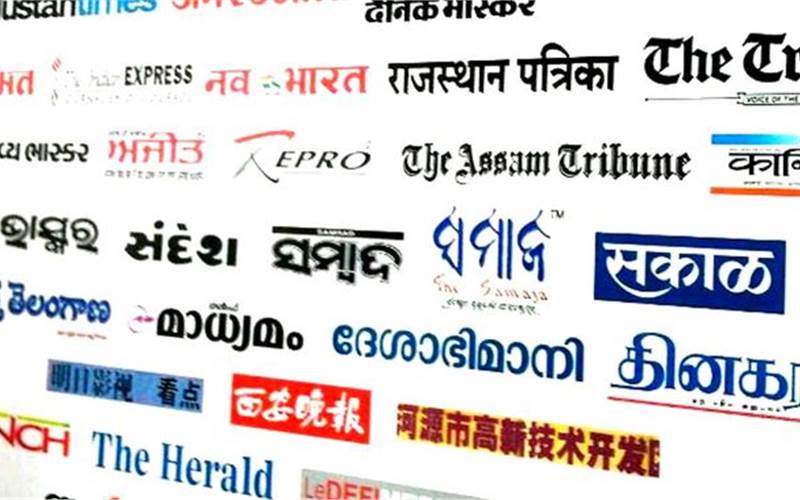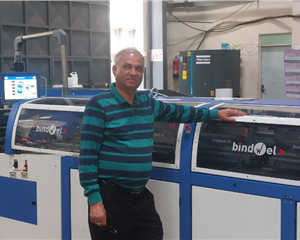Print News from Round the World
This edition of the weekly update includes government printing press to be upgraded at a cost of Rs 338 crore; six held in Bhopal for printing fake currency notes; founded in 1910, Osmania University printing press rumbles on; print ads can help promote education for girl child; and, a weekly dedicated to the cow.
26 Apr 2017 | By Dibyajyoti Sarma
Government printing press to be upgraded at a cost of Rs 338 crore
Central minister of urban development M Venkaiah Naidu has accepted a proposal to modernise and upgrade the Government of India Printing Press at Minto Road in New Delhi at a cost of Rs 338.56 crore. As part of the plan, the current building of the press will be redeveloped at a cost of Rs 238.56 crore into three blocks of ground plus six floors suitable to house modern technology and equipment to be installed at a cost of Rs 100 crore.
At present, the machines and equipment being used are of 1980-2005 vintage and some of them were installed as early as in 1968, resulting in high cost of production.
Following this redevelopment and modernisation, the production capacity of the press will increase from the present 16-lakh A5 size pages per day (60 crore pages per year) to 45-lakh pages per day (164.96 crore pages per year), marking an increase of 177% in production capacity.
The press meets all printing needs of both the Houses of the Parliament, including day-to-day Parliamentary proceedings, question lists, bills, acts, synopsis, reports, debates, Parliamentary committee reports and so on, besides the needs of cabinet secretariat and various ministries and departments of the central government. Due to lack of multicolour printing facility at present, job works like printing of annual reports of various ministries and departments are being outsourced.
The entire redevelopment and modernisation work is projected to be completed in 52 months. (Business Standard)
Six held in Bhopal for printing fake currency notes
The Bhopal crime branch police have arrested at least six people for allegedly printing fake currency notes. The police have also seized about Rs 2 lakh worth fake currency notes mostly of Rs 2,000 and Rs 100 denominations.
The accused used very basic office and home devices like printer, scanner, paper cutter, white printing paper, etc.
“The arrested persons confessed that they started printing the notes going by the initial media reports about the ‘poor’ paper quality and issues like discolouration about the Rs 2,000 note. They thought they could easily circulate fake currency notes by printing them at their home without much investment,” said additional superintendent of police (crime) Rashmi Mishra.
The police said the plan was to circulate the fake notes in rural areas. “They generally prefer to print fake notes of Rs 2,000 and Rs 100 denomination because they thought Rs 100 notes were easy to circulate in villages while in Rs 2,000 fake note they could get more profit,” Mishra added. (Free Press Journal)
Founded in 1910, Osmania University printing press rumbles on
The printing machines of the in-house press at Osmania University, Hyderabad, exported from Germany and London way back in 1910 by the erstwhile Nizams of Hyderabad, continues to churn out documents with pinpoint precision and clarity.
Talking to Telengana Today, Syed Rahman, director, department of publication and press, said, “In those days, printing technology was alien in the country. Hence, the printing machines were brought from London and Germany. Some of the machines that are still under use are 50 to 60 years old. They still work wonderfully well and the output is crisp, clear and precise.”
At present, the Osmania University Press has three printing machines.
The press was established in April 1918 and was under the supervision of the Government Central Press until 1928. By 1929, the press was brought under the direct supervision of the university.
The department of publication and press was established after the closure of the department of translation in 1949. Since then, the Osmania University Press has remained under the control of the department. Officials said the press is equipped for publications in English, Hindi, Telugu, Marathi and Sanskrit.
For a long time, the press used to print question papers for university exams. Now, it prints office and examination material like answer booklets, challans, prescription for health centre, application forms, diaries, calendar, and greeting cards, among others.
Today, the press adds at least Rs 50 to Rs 60 lakh to the university revenue every year. (Telengana Today)
Print ads can help promote education for girl child
Print advertising can serve as a huge platform for reaching out and conveying benefits of educating the girl child, leading experts from the world of advertising have said. They also said print advertising remains crucial and relevant despite emerging digital platforms.
“The importance of education is best known by the educated lot and in my belief and observation, this lot still begins their day with tea and the newspaper,” said Kainaz Karmakar, executive creative director at Ogilvy. “A compelling print ad can trigger these erudite individuals to take this matter seriously. At the end of this campaign, even if a handful of people turned and asked their maids, ‘Are you sending your daughter to school?’ we should feel mighty good,” he said.
Educating the girl child is the underlying theme of the ‘Power of Print’ contest, which was launched by the Times Group earlier this month in partnership with Nestle. The objective of the campaign is to ensure that more girls go to school.
“This is not the time for empty evocation; it’s time for instant and immediate action. How can any child girl or boy be deprived of education? This is as important as free air and free water and policies have to change and it is time we made education a birthright for every child born in this country, even if it has to be free,” Senthil Kumar, chief creative officer at JWT, said.
The ability of the press to prod people to think makes it relevant and provides an edge over digital, the experts said.
“Press is permanent, a record keeper of the times we live in. Once it’s in the newspaper, it’s out there in the world forever. Digital can only make us feel but, Press can make us think,” Agnello Dias, chairman and co-founder of TapRoot, said. (The Times of India)
A weekly dedicated to the cow
Dipti Nagpaul writes about Sanjay R Sharma, who grew up in Gorakhpur and moved to Mumbai in 1993, and who has launched his own newspaper — dedicated to the cow. He had been working as a journalist with several regional publications before this.
Titled Gau Bharat Bharti, Sharma says this is the first weekly publication of its kind: “I didn’t have the means to start a gaushala. As a writer, this is my contribution towards the welfare of the cow.”
In its third year now, Gau Bharat Bharti is a trilingual in Gujarati, Hindi and English, and prints close to 20,000 copies of each edition, which are sold across stalls in Mumbai for Rs 2 each. It is also distributed across Maharashtra, Delhi and Gujarat. Sharma says the paper has a regular subscriber base of 2,000. It has a permanent staff of five people, including its founder-editor and stringers in the major cities.
Sharma says that the subject of the cow need not be controversial. “Look at it from the scientific point of view. The cow yields milk that’s nutritious, it’s a rich source of manure, and, its urine has many uses. Recently, a university in Junagadh found traces of gold in cow urine. We aim to guide readers as to why the cow should be treated as mother,” says Sharma.
The 39-year-old editor admits that bringing out the weekly would not have been possible without support from the RSS, which he has been a member of since childhood. “Several local BJP politicians advertise with us,” he explains, pointing to an ad featuring Poonam Mahajan, BJP MP from Mumbai north-central. Sharma also runs a trust dedicated to the welfare of cows, which he launched in 2012. (The Indian Express)














 See All
See All